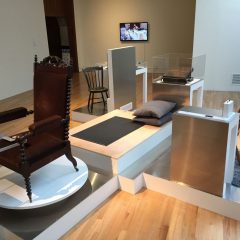A couple of things struck me about the sale of the Gross Clinic as I listened to the WHYY Radio Times discussion over the past hour (follow to previous posts by going here and keep clicking backward to follow the thread).
The value of a great piece of art has nothing to do with its price. The art is a thing that carries its own value, in this case by being a symbol of the City of Philadelphia and its values.
A false equation
Therefore, to compare its monetary value to the use of that money for some other charity is a false equation. People make art not because of its monetary value. They make it because they have a need to make it. It’s hard-wired into our brains to make art and make statements and make marks. While there’s a market for art that places monetary values on those effusions and recordings, the art would exist and be important even without a penny being spent on it.
There’s also an assumption that there’s only so much money out there, and it’s a choice. The amount of money out there for causes is pretty spongy, and someone who gives for art may not be interested in giving to some other cause.
You don’t see the Alice L. Walton taking her little pile of money designated for art and sending it to some none-art charity in Philadelphia.
Money laundering
Finally, this is an example of money laundering. The Walton’s are today’s robber barons, looking to find respectability through art. The mere fact that they are acquiring cultural icons like The Gross Clinic for their museum, Crystal Bridges, to be erected in Bentonville, Ark., only proves my point–that art has a value beyond money. It carries the messages of our culture.
That’s the thing about great art. It is not just something pretty, or something to hang on the wall. It is laden with values, and I don’t mean monetary ones.
The Gross Clinic is not just about the values that Eakins expressed in the image–the value of medicine and science and Jefferson Hospital and a great man and education; it is a piece of history, intertwined with the Philadelphia establishment’s sorry treatment of Eakins–and all the values that shunning represented. The history also includes an intellectual lineage that survives today, and I want to suggest today’s Stephan Salisbury article in the Inquirer for some nice specifics on this. While I’m at it Stephan has been writing his heart out, beating the drum on this issue, which would surely have died a silent death without his reporting. Send him a thank you note. Wasn’t he the reporter who covered the attempted rape of the Tiffany Dream Garden, too?
While I’m thanking people, thank you to all the bloggers and commenters who have weighed in here–especially WHYY’s Eakins 45-day countdown blog, The Sixth Square, but also Matthews the Younger (that’s Rob Matthews), Charles Hankin, and Phillyblog.
But all in all, the biggest noise in print and the only real reporting is coming from Salisbury.
In the real world, Patrick Connors and Stan Bielen and some folks from Artists Equity are trying to fan the flames of protest. Help ’em out, will you, and show up for vigils on Sundays at 10th and Locust, in front of Alumni Hall, where the painting is now housed.
Oh, one more thing. Give money to the PMA/PAFA fund to save the painting. Who knows? It might work.









